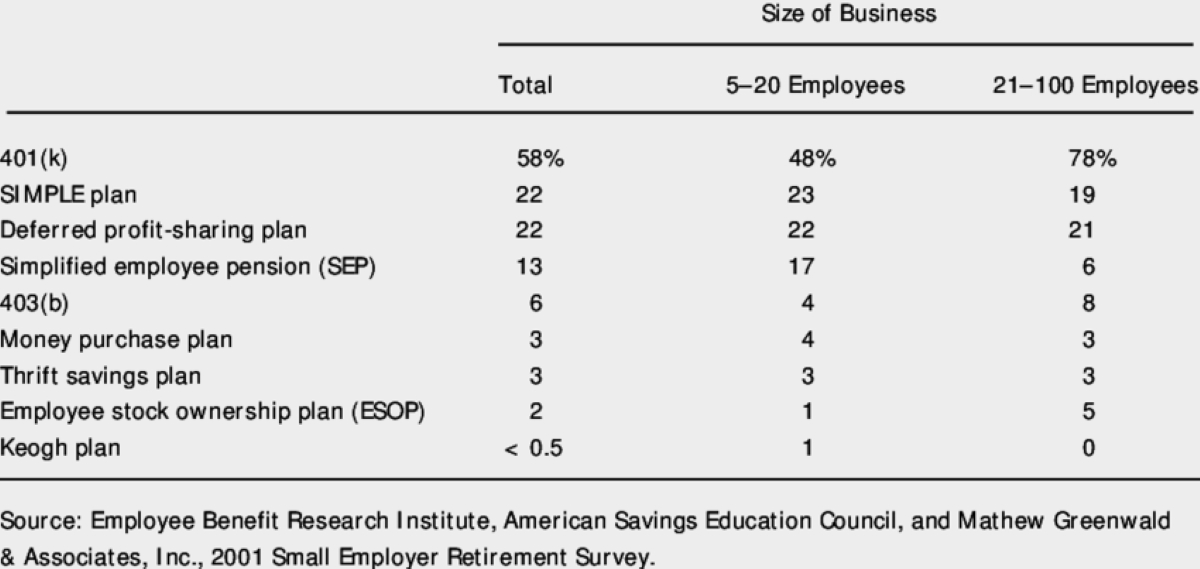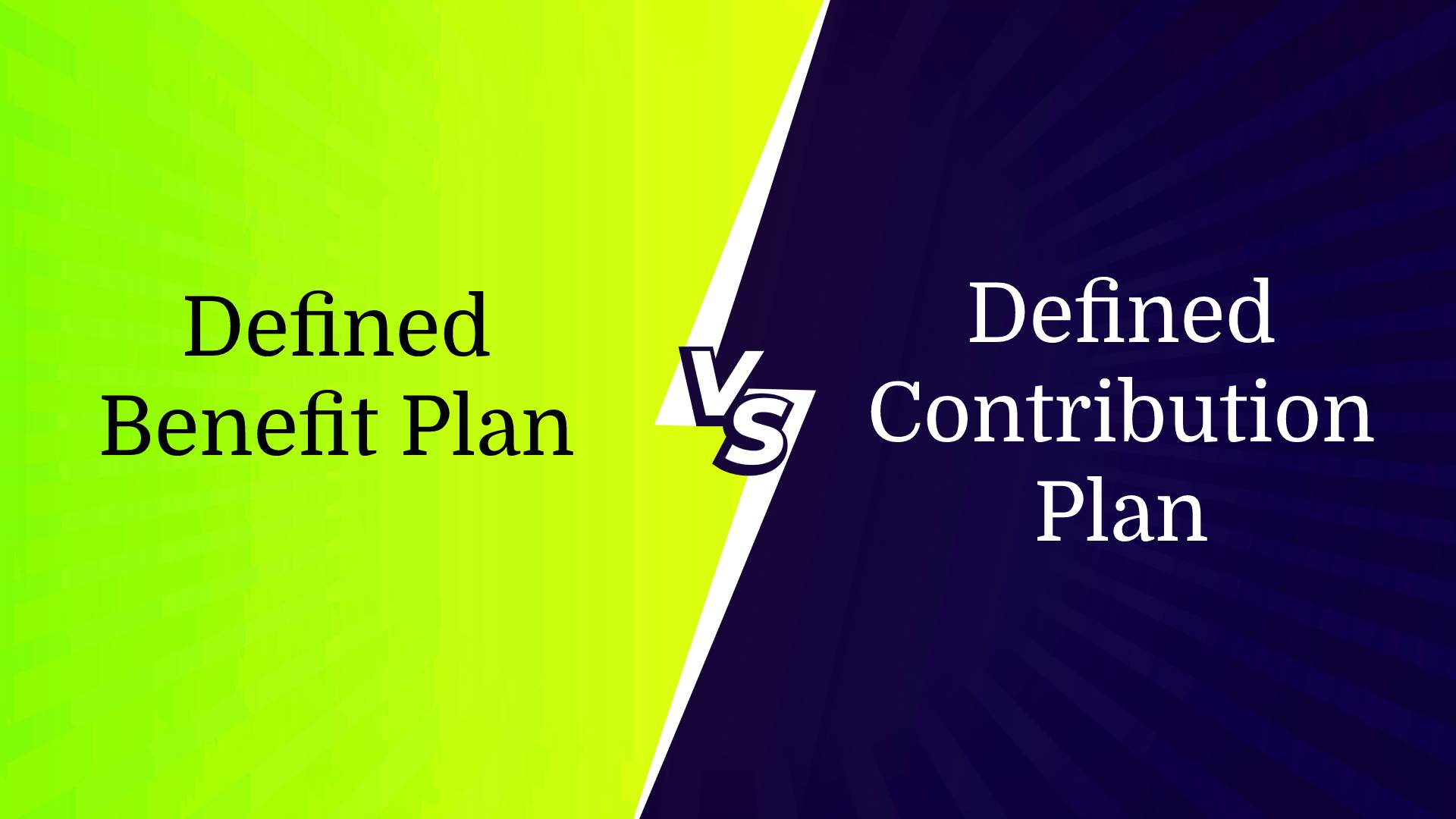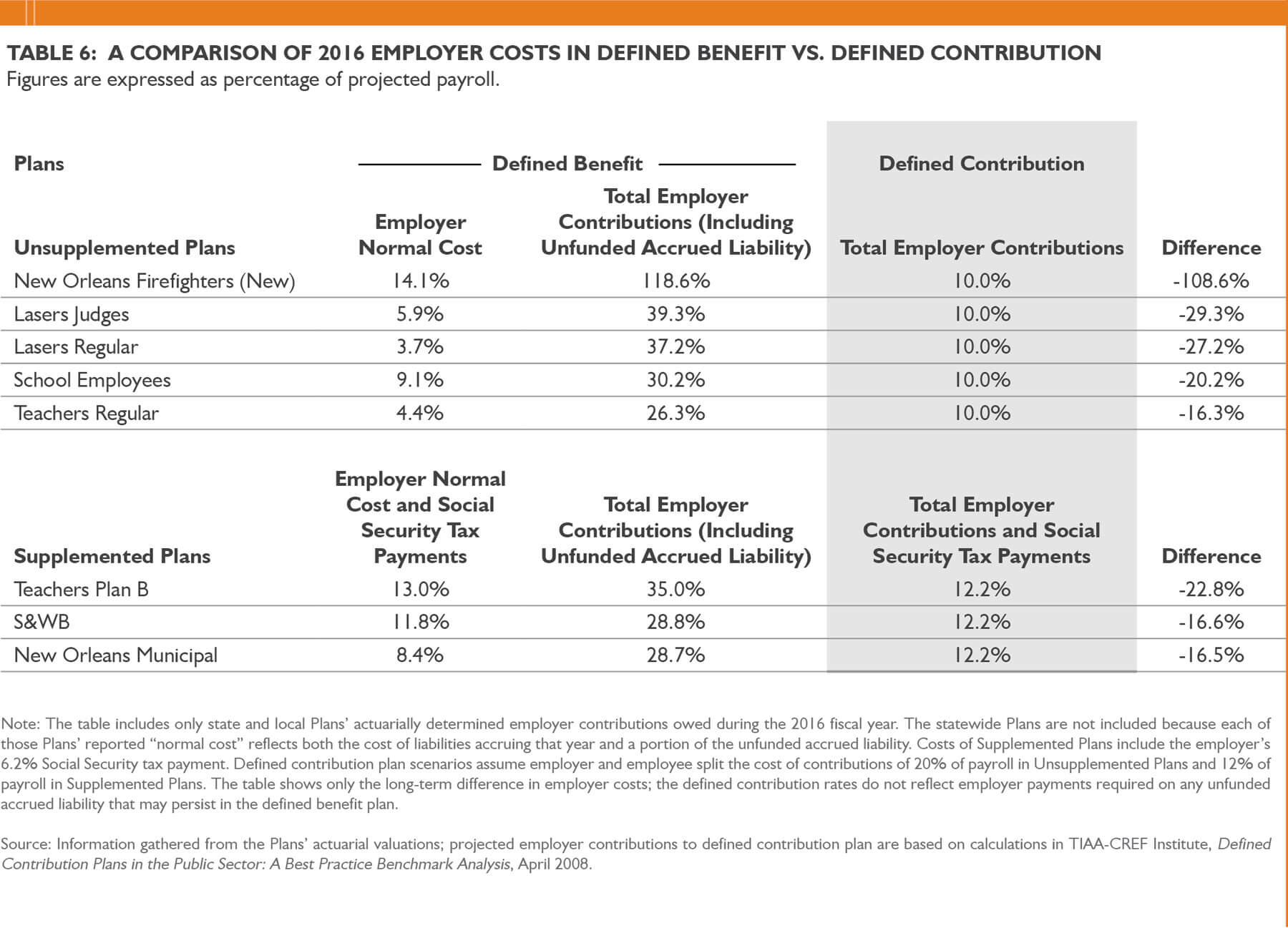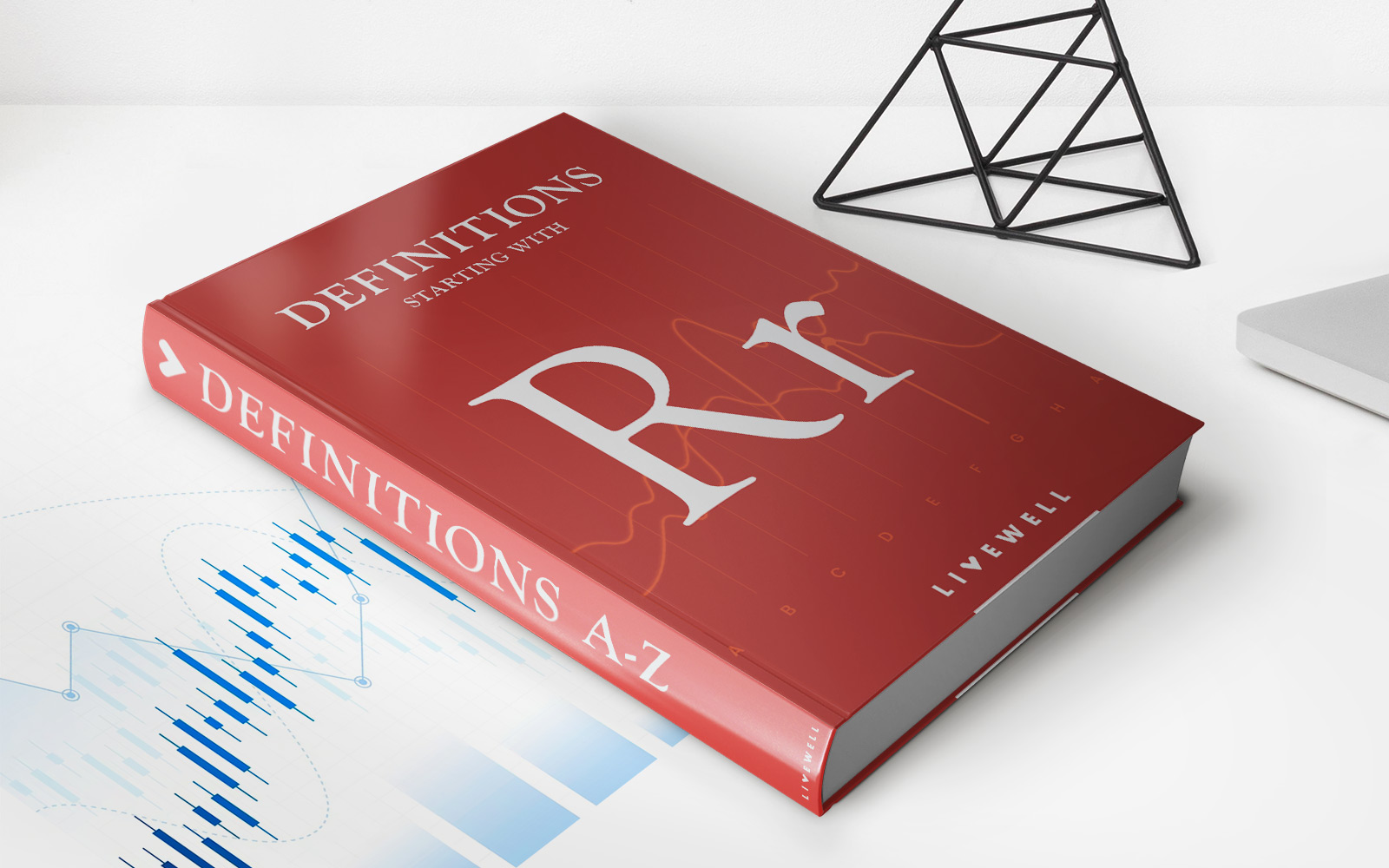

Finance
What Are Types Of Defined Contribution Plans
Published: January 2, 2024
Learn about different types of defined contribution plans in the world of finance. Discover how these plans can help you save for retirement and manage your financial future.
(Many of the links in this article redirect to a specific reviewed product. Your purchase of these products through affiliate links helps to generate commission for LiveWell, at no extra cost. Learn more)
Table of Contents
Introduction
When it comes to retirement planning, understanding the different types of defined contribution plans can be crucial. Defined contribution plans are retirement savings accounts where both employees and employers make contributions on a regular basis. These plans offer employees the opportunity to save for retirement while enjoying potential tax benefits.
Unlike defined benefit plans, which promise a specified amount of retirement income, defined contribution plans provide individuals with an account balance that is determined by contributions and investment performance. As a result, the retirement benefits in these plans depend on factors such as the amount of contributions made, the investment returns earned, and the length of time the money is invested.
In this article, we will explore the various types of defined contribution plans available for individuals and how they can help in building a secure retirement nest egg. From 401(k) plans to IRAs and profit sharing plans, we will examine each plan and highlight their unique features, benefits, and considerations.
It is important to note that these plans may have different eligibility requirements, contribution limits, and withdrawal rules. It is essential to consult with a financial advisor or retirement planning specialist to determine the most suitable defined contribution plan based on individual circumstances and retirement goals.
Now, let’s dive into the different types of defined contribution plans and explore their potential for securing a financially stable retirement future.
401(k) Plans
401(k) plans are one of the most common types of defined contribution plans offered by employers. These plans allow employees to contribute a portion of their pre-tax salary to a retirement account, where the contributions grow tax-deferred until withdrawn during retirement.
One of the key advantages of 401(k) plans is the potential for employer matching contributions. Employers may contribute a percentage of an employee’s salary to the 401(k) plan, which can significantly boost their retirement savings. The employer match is often subject to a certain percentage or dollar limit, so it’s important for employees to contribute at least enough to receive the full employer match.
Another benefit of 401(k) plans is the relatively high contribution limit. In 2021, employees can contribute up to $19,500 in pretax income to their 401(k) account. For employees aged 50 and older, an additional catch-up contribution of up to $6,500 is allowed, bringing the total contribution limit to $26,000. These higher contribution limits provide an opportunity to save a significant amount for retirement.
However, it’s crucial to keep in mind that 401(k) plans also have restrictions on withdrawals. Generally, withdrawals made before the age of 59½ are subject to a 10% early withdrawal penalty, in addition to income tax. Exceptions to this penalty include certain financial hardships, medical expenses, or distributions taken as a series of substantially equal payments. It’s essential to understand the withdrawal rules before making any decisions.
Overall, 401(k) plans offer a convenient and tax-advantaged way to save for retirement. They provide employees with the ability to automate contributions directly from their salary and benefit from potential employer matches. It’s important to review the investment options available within the 401(k) plan and make appropriate asset allocations based on risk tolerance and retirement goals.
Keep in mind that the specific details and features of 401(k) plans may vary depending on the employer. It’s advisable to consult with the plan administrator or a financial advisor to fully understand the options available within the 401(k) plan and make informed decisions for a secure retirement future.
Individual Retirement Accounts (IRAs)
Individual Retirement Accounts, commonly known as IRAs, are another popular type of defined contribution plan that individuals can establish on their own. Unlike 401(k) plans, IRAs are not employer-sponsored and can be set up by anyone with earned income.
IRAs offer individuals a wide range of investment options, including stocks, bonds, mutual funds, and even real estate. There are two main types of IRAs: Traditional IRAs and Roth IRAs.
Traditional IRAs allow individuals to contribute on a pre-tax basis, meaning contributions are tax-deductible in the year they are made. The earnings in a Traditional IRA grow tax-deferred until withdrawal during retirement. Once funds are withdrawn, they are subject to income tax. Traditional IRAs are suitable for individuals who anticipate being in a lower tax bracket during retirement.
On the other hand, Roth IRAs are funded with after-tax dollars, which means contributions are not tax-deductible. However, the earnings in a Roth IRA grow tax-free, and qualified withdrawals in retirement are also tax-free. Roth IRAs are a good option for individuals who expect to be in a higher tax bracket during retirement or wish to have tax-free income in their golden years.
The contribution limits for IRAs are lower compared to 401(k) plans. In 2021, individuals can contribute up to $6,000 to an IRA, with an additional catch-up contribution of $1,000 allowed for those aged 50 and older.
One notable advantage of IRAs is the flexibility they offer in terms of investment choices and providers. Individuals can open an IRA with a brokerage firm, bank, or other financial institutions and have control over their investment decisions. This flexibility allows for customization based on risk tolerance, investment preferences, and retirement goals.
Like 401(k) plans, IRAs also have withdrawal rules and penalties. Withdrawals made before the age of 59½ are generally subject to a 10% early withdrawal penalty, in addition to income tax. However, just like with 401(k) plans, there are exceptions to this penalty for certain qualified expenses and circumstances.
In summary, IRAs are a valuable retirement savings tool for individuals who do not have access to employer-sponsored plans or wish to have more control over their investments. Whether it’s a Traditional IRA or a Roth IRA, these accounts offer tax advantages and freedom of choice when it comes to investment options. It’s important to consult with a financial advisor to determine the most suitable IRA and investment strategy based on individual circumstances and goals.
Simplified Employee Pension (SEP) Plans
Simplified Employee Pension (SEP) plans are retirement plans specifically designed for small business owners and self-employed individuals. SEP plans offer a simplified and cost-effective way for employers to provide retirement benefits to their employees and themselves.
SEP plans work by allowing employers to make tax-deductible contributions to SEP IRAs (Individual Retirement Accounts) established for eligible employees, including the business owner. Contributions are typically based on a percentage of each employee’s compensation, up to a set limit.
One of the main advantages of SEP plans is the high contribution limits. In 2021, the employer can contribute up to 25% of each employee’s compensation or a maximum of $58,000, whichever is lower. This flexibility allows employers to make substantial contributions towards retirement savings.
It’s important to note that SEP plans do not require employees to make contributions. The entire responsibility of funding the retirement plan rests with the employer. This can be a significant benefit for small business owners who want to save for their own retirement while providing a retirement benefit to their employees.
SEP plans are relatively easy to establish and maintain, with minimal administrative requirements compared to other retirement plans. Employers have until their tax-filing deadline (including extensions) to establish and contribute to the SEP plan for the previous tax year.
Employees participating in SEP plans have the option to manage their SEP IRA investments by choosing from a wide range of investment options offered by the financial institution holding their accounts.
However, it’s important to understand that withdrawals from SEP IRAs are subject to income tax. Additionally, if any withdrawals are made before the age of 59½, they may be subject to a 10% early withdrawal penalty unless an exception applies.
SEP plans offer small business owners and self-employed individuals a straightforward and cost-effective way to save for retirement. By providing a retirement benefit to employees, employers can attract and retain talented employees while securing their own financial future. Consulting with a financial advisor or retirement planning specialist is advisable to understand the specific requirements, contribution limits, and tax implications of SEP plans.
SIMPLE IRA Plans
SIMPLE IRA (Savings Incentive Match Plan for Employees) plans are retirement savings plans designed for small businesses with less than 100 employees. These plans offer a straightforward and accessible way for employers to provide retirement benefits to their employees while also contributing to their own retirement savings.
SIMPLE IRA plans operate similarly to 401(k) plans, but with simplified administrative requirements and lower costs. Both employers and employees can make contributions to the plan, which are immediately vested for the employee.
Under a SIMPLE IRA plan, employees can make elective salary deferrals from their pre-tax income, similar to a traditional 401(k) plan. The employer is then obligated to make either a matching contribution or a non-elective contribution on behalf of eligible employees. The employer may choose to either match the employee’s contribution up to a certain percentage or flat dollar amount or contribute a fixed percentage of each eligible employee’s compensation.
One of the key advantages of SIMPLE IRA plans is the higher contribution limits compared to traditional IRAs. In 2021, employees can contribute up to $13,500 to their SIMPLE IRA, with an additional catch-up contribution of $3,000 allowed for individuals aged 50 and older.
Employers have flexibility when it comes to their contribution obligations. They can either match employee contributions dollar-for-dollar up to 3% of the employee’s compensation, or make a non-elective contribution of 2% of each eligible employee’s compensation, even if the employee does not contribute to the plan. This provides options for employers based on their financial capabilities and goals.
Similar to other retirement plans, withdrawals from SIMPLE IRAs are subject to income tax. If withdrawals are made before the age of 59½, a 10% early withdrawal penalty may apply, unless an exception is met.
It’s important for employers to note that SIMPLE IRA plans have specific rules and deadlines for setup and contribution. Employers must establish a SIMPLE IRA plan by October 1st of the year it is intended to be effective. Contributions must be made either through salary deferrals or employer contributions within a timely manner to comply with IRS regulations.
SIMPLE IRA plans offer a cost-effective and accessible retirement savings option for small businesses. They provide employees with an opportunity to save for retirement while benefiting from employer contributions. Employers can attract and retain talented employees by offering a retirement plan and also enjoy the advantages of tax-deductible contributions. Consulting with a financial advisor or retirement plan specialist can help navigate the complexities and ensure compliance with SIMPLE IRA plan guidelines.
Profit Sharing Plans
Profit Sharing Plans are retirement plans that allow employers to make discretionary contributions to eligible employee accounts based on a percentage of the company’s profits. These plans provide employers with the flexibility to reward employees with a share of the company’s success while simultaneously saving for their own retirement.
Under a Profit Sharing Plan, the employer has the discretion to determine the contribution amount each year. Contributions are typically allocated based on a predetermined formula, such as the employee’s salary or hours worked. This means that the contribution amount can vary from year to year depending on the profitability of the company.
One of the benefits of Profit Sharing Plans is the potential for significant employer contributions. Employers can contribute up to 25% of an employee’s compensation or $58,000 (whichever is lower) for the 2021 tax year. However, the total contributions to an employee’s account cannot exceed their annual compensation.
Profit Sharing Plans can be structured in a way that allows for vesting of employer contributions. Vesting refers to the gradual ownership of employer contributions over time. Employers can choose to implement a vesting schedule, such as a cliff vesting or graded vesting, to encourage employee loyalty and retention.
Employees participating in Profit Sharing Plans have the option to manage their investment allocations based on the available investment options provided by the plan. These options can include a range of investment vehicles, such as mutual funds or company stock.
It’s important to note that contributions made to Profit Sharing Plans are tax-deductible for the employer, and the earnings on these contributions grow tax-deferred until withdrawal. Withdrawals from Profit Sharing Plans are subject to income tax, and if taken before the age of 59½, may also be subject to a 10% early withdrawal penalty, unless an exception applies.
Profit Sharing Plans provide employers with the opportunity to share their company’s success with employees while encouraging long-term loyalty and commitment. For employees, these plans offer the potential for significant retirement savings and the ability to participate in the growth of the company. Consulting with a financial advisor or retirement plan specialist can help employers design and implement a Profit Sharing Plan that aligns with their business goals and complies with the applicable regulations.
Employee Stock Ownership Plans (ESOPs)
Employee Stock Ownership Plans (ESOPs) are unique retirement plans that provide employees with ownership stakes in the company they work for. These plans are designed to give employees a vested interest in the company’s success and can serve as a powerful tool for employee engagement and long-term wealth creation.
Under an ESOP, a company sets up a trust and contributes shares of company stock or cash to the trust. The trust then holds the shares on behalf of the employees participating in the plan. Over time, employees earn shares of company stock based on various factors, such as years of service or compensation.
One of the primary advantages of ESOPs is that they allow employees to accumulate company stock without directly purchasing it. This means that employees can build ownership in the company as a retirement benefit, which can have significant financial rewards if the company performs well.
ESOPs offer a variety of benefits for both employees and employers. Employees can participate in the financial success of the company and potentially benefit from stock price appreciation. Additionally, employees often have a vested interest in the long-term success of the company, leading to increased engagement and productivity.
From an employer’s perspective, ESOPs can be an effective tool for incentivizing employees and facilitating ownership succession. ESOPs can also provide tax advantages for the company, as contributions made to the ESOP trust are usually tax-deductible.
However, it’s important to note that ESOPs involve certain risks. Employees’ retirement savings are tied to the performance of the company’s stock, which can be volatile. As a result, diversification is a key consideration for both employees and employers when implementing an ESOP. Employees need to carefully evaluate the concentration of their retirement savings in the company’s stock and ensure they have a well-diversified investment portfolio outside of the ESOP.
Additionally, just like other retirement plans, there are rules and regulations governing ESOPs. It’s essential for employers to ensure compliance with these guidelines to maintain the tax advantages of the plan and protect the interests of the employees.
ESOPs are a unique retirement plan option that can be highly valuable for both employees and employers. By giving employees a stake in the company’s success, ESOPs promote employee engagement, loyalty, and long-term wealth creation. Consulting with a financial advisor or ESOP specialist is advisable to navigate the intricacies of implementing and managing an ESOP and ensure it aligns with the company’s goals and legal requirements.
Money Purchase Pension Plans
Money Purchase Pension Plans are retirement plans that require employers to make fixed annual contributions to each eligible employee’s account. These contributions are typically a percentage of the employee’s salary and are made regardless of the company’s profitability.
Unlike other types of retirement plans, such as profit-sharing plans, the contributions made to Money Purchase Pension Plans are predetermined and mandatory. Employers must adhere to the predetermined contribution requirements set forth in the plan. This provides employees with a reliable and consistent stream of retirement savings.
The contribution limits for Money Purchase Pension Plans are higher compared to those for IRAs or 401(k) plans. In 2021, the maximum annual contribution limit is $58,000 or 100% of the employee’s salary, whichever is lower. These higher contribution limits make Money Purchase Pension Plans attractive for individuals who want to maximize their retirement savings.
Money Purchase Pension Plans are also subject to vesting rules, which determine the ownership of the contributions. Employers can choose between a cliff vesting schedule, where employees become fully vested after a certain number of years of service, or a graded vesting schedule, where employees become partially vested over a period of time. Vesting schedules provide an added incentive for employees to stay with the company long-term.
Employees participating in Money Purchase Pension Plans typically have limited control over their investment choices. The plan administrator usually makes investment decisions on behalf of all participants, often investing the contributions in a diversified portfolio of stocks, bonds, mutual funds, or other securities. This approach ensures professional management of the retirement funds.
Upon retirement, employees can typically choose to receive their accumulated savings in the form of a lump-sum distribution or as annuity payments that provide a steady stream of income throughout their retirement years. However, it’s important to note that withdrawals from Money Purchase Pension Plans are subject to income tax.
Employers offering Money Purchase Pension Plans have the opportunity to provide a retirement benefit that offers a predictable retirement income for their employees. These plans can be particularly beneficial for companies with consistent profitability and strong cash flow. Consulting with a financial advisor or retirement plan specialist is recommended to design and implement a Money Purchase Pension Plan that meets the specific needs and goals of the company and its employees.
Target Date Retirement Funds
Target Date Retirement Funds, also known as target date funds or lifecycle funds, are a type of investment option designed for retirement savings that automatically adjust the asset allocation based on the target retirement date. These funds are often offered by retirement plans, such as 401(k) plans, and provide individuals with a convenient and simplified investment solution.
The key feature of target date retirement funds is the glide path. The glide path refers to the gradual adjustment of the asset allocation as the target retirement date approaches. Initially, when the target retirement date is far away, the fund will have a higher allocation to more aggressive investments, such as stocks, to potentially achieve higher growth. As the target retirement date gets closer, the allocation gradually shifts towards more conservative investments, such as bonds, to preserve capital and reduce investment risk.
The target date retirement funds are typically named with a specific year, indicating the year the investor plans to retire. For example, a fund targeting individuals retiring in 2050 would be called a “Target Date 2050 Fund.” Individuals select the fund with the target date that aligns with their expected retirement year.
One of the main benefits of target date retirement funds is their simplicity. Investors do not need to actively manage their asset allocation or constantly monitor the markets. The fund automatically adjusts the asset allocation over time, saving investors the time and effort of making these investment decisions themselves.
Target date funds also provide a level of diversification within a single investment. They typically invest in a mix of stocks, bonds, and other asset classes. This diversification helps to spread the investment risk and potentially minimize volatility as the investor approaches retirement age.
It is important to note that target date retirement funds are not a one-size-fits-all solution. Each fund has its own investment strategy and risk profile. Individuals should carefully review the fund’s prospectus, investment objectives, and historical performance before investing. Additionally, investors may have different risk tolerance levels or specific investment preferences, which may require adjustments to the asset allocation.
Target date retirement funds are a convenient option for individuals looking for a simplified approach to retirement investing. They offer a hands-off solution that adjusts the asset allocation over time based on the target retirement date. However, it’s essential to periodically review the fund’s performance and make adjustments as needed to ensure the investment aligns with personal retirement goals and risk tolerance. Consulting with a financial advisor can provide valuable guidance in selecting and managing target date retirement funds.
Cash Balance Plans
Cash Balance Plans are a type of retirement plan that combines features of both defined benefit plans and defined contribution plans. These plans are particularly popular among business owners, professionals, and high-income earners who want to accelerate their retirement savings and potentially reduce their tax liability.
In a Cash Balance Plan, the employer makes annual contributions to each participant’s account, which grows at a predetermined interest rate. The account balance is usually presented as a hypothetical “cash balance” rather than specific individual investments. This allows participants to benefit from the potential compound growth of their account.
One of the primary advantages of Cash Balance Plans is the ability to make larger contributions compared to traditional individual retirement accounts (IRAs) or 401(k) plans. The contribution limits for Cash Balance Plans can reach into the hundreds of thousands or even millions of dollars, depending on factors such as age and income. These higher contribution levels provide an accelerated retirement savings opportunity.
Cash Balance Plans can be particularly beneficial for business owners and high-income professionals looking to reduce their tax liability. Contributions made by the employer are typically tax-deductible, helping to lower the taxable income for the company. Employees can also enjoy tax benefits, as the contributions made on their behalf are not currently taxable and can grow tax-deferred until withdrawal in retirement.
Unlike other retirement plans, Cash Balance Plans guarantee a minimum return on investment through the predetermined interest rate. This creates a measure of predictability and security for participants, as their account balance will continue to grow regardless of market conditions.
Upon retirement or termination of employment, participants have several options for accessing the funds in their Cash Balance Plan. They can choose to receive a lump sum distribution, roll the funds into an individual retirement account (IRA), or convert the balance into an annuity that provides regular income throughout retirement.
It’s important to note that Cash Balance Plans are subject to complex rules and regulations. Employers must comply with nondiscrimination testing requirements to ensure that the plan does not favor highly compensated employees. Consulting with a retirement plan specialist or financial advisor who specializes in Cash Balance Plans is essential to design, implement, and manage the plan effectively.
Cash Balance Plans provide a powerful retirement savings strategy for business owners, professionals, and high-income earners. With the potential for higher contribution limits, tax advantages, and the security of a guaranteed minimum return, Cash Balance Plans can play a significant role in building a substantial nest egg for retirement.
403(b) Plans
403(b) plans, also known as tax-sheltered annuity plans, are retirement savings plans designed for employees of certain tax-exempt organizations, such as public schools, universities, and nonprofit organizations. These plans offer individuals an opportunity to save for retirement on a tax-deferred basis and enjoy potential employer contributions.
Similar to 401(k) plans, 403(b) plans allow employees to contribute a portion of their pre-tax salary to their retirement account. These contributions grow tax-deferred until withdrawal during retirement. In 2021, the maximum employee contribution limit is $19,500, with an additional catch-up contribution of $6,500 allowed for individuals aged 50 and older.
One of the unique features of 403(b) plans is the availability of annuity contracts as an investment option. Annuities provide individuals with a guaranteed income stream in retirement. With a 403(b) plan, employees can choose from various annuity providers and select the type of annuity that best suits their retirement goals.
Another advantage of 403(b) plans is the potential for employer contributions. Employers may choose to match a portion of the employee’s contributions or make non-elective contributions. The employer contribution limits for 403(b) plans are more generous than for other retirement plans, such as IRAs, which allows employees to benefit from additional retirement savings.
It’s important to note that 403(b) plans may have specific rules and regulations governing contributions and withdrawals. For example, certain organizations may have limits on the types of investments or providers available within the 403(b) plan. Additionally, withdrawals from 403(b) plans before the age of 59½ may incur a 10% early withdrawal penalty, in addition to income tax, unless an exception applies.
403(b) plans offer individuals in the education and nonprofit sectors a valuable retirement savings option. With the ability to make tax-deferred contributions, potential employer contributions, and the option for annuity investments, these plans provide a pathway to building a secure retirement future. Consulting with a financial advisor or retirement plan specialist is advisable to understand the specific features of the 403(b) plan offered by the employer and to make informed decisions about investment options and contribution strategies.
Conclusion
Understanding the various types of defined contribution plans is essential for successful retirement planning. Each plan offers unique features and benefits that cater to different needs and circumstances. Whether you’re an employee looking to maximize your retirement savings or an employer seeking to provide a competitive retirement benefit package, there’s a defined contribution plan that can fit your goals.
From the popular 401(k) plans and IRAs to the specialized options like SEP plans, SIMPLE IRA plans, and ESOPs, each plan has its own advantages and considerations. The key is to align the chosen plan with your financial situation, retirement goals, and risk tolerance.
While 401(k) plans and IRAs offer flexibility and tax advantages for individual savers, SEP plans and SIMPLE IRA plans are ideal for small business owners and self-employed individuals. ESOPs provide employees with ownership in the company, and Profit Sharing Plans offer employers a way to reward employees while saving for retirement.
For those seeking simplicity and convenience, target date retirement funds can be a hands-off investment option, while Cash Balance Plans offer high-income earners an opportunity to accelerate their retirement savings. Lastly, 403(b) plans cater specifically to employees in the education and nonprofit sectors.
Regardless of the defined contribution plan chosen, it’s essential to regularly review the plan’s performance, contribution limits, and investment strategies. Consulting with a financial advisor or retirement planning specialist can provide guidance and ensure that the chosen plan aligns with individual goals and objectives.
Ultimately, a comprehensive retirement strategy may involve a combination of different defined contribution plans, individual savings, and Social Security benefits. By understanding the available options and making informed decisions, individuals and employers can take significant steps toward building a secure and prosperous retirement future.














